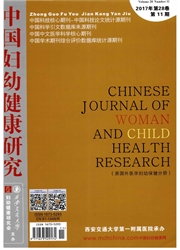

 中文摘要:
中文摘要:
目的通过比较两种物理和两种化学缺氧方法诱导卵巢癌细胞上皮-间质转化的效果,建立最佳缺氧诱导EMT方法。方法SKOV3细胞经各种缺氧方法处理24小时后,倒置显微镜观察细胞形态改变,Westernblot检测相关蛋白标志物及缺氧诱导因子-1α表达水平的变化。结果厌氧培养袋及三气培养箱缺氧均能诱导SKOV3细胞形态由铺路石样的上皮细胞形态改变为明显的梭形间质细胞形态,并增高缺氧诱导因子-1α及间质细胞标志物波形蛋白(Vimentin)的表达,降低上皮细胞标志物上皮型.钙粘蛋白(E.cadherin)的表达,提示发生EMT现象。氯化钴(CoCl2)及亚硫酸钠(Na2SO3)处理24小时后未能诱导SKOV3细胞发生EMT相关细胞形态及标志物表达变化。结论厌氧培养袋和三气培养箱可成功诱导卵巢癌细胞发生EMT。
 英文摘要:
英文摘要:
Objective To establish the optimal method to induce epithelial-mesenchymal transition (EMT) in ovarian cancer cells by comparing the effects of two physical and chemical hypoxia methods to induce EMT. Methods SKOV3 cells were treated by one of the four hypoxia methods. Cell morphology was observed with inverted-microscope and cell images were captured. Western blot was used to examine the expression of EMT-associated markers and hypoxia induced factor-1αa( HIF-1α). Results I-lypoxia environment generated by anaerobic bag and tri-gas incubator could readily induce EMT, reflected by morphological change from tightly-connected cobble-stone shape to scattered spindle-like shape, upregulation of HIF-1α and Vimentin, and downregulation of E-cadherin in SKOV3 cells. Conversely, treatment of sodium sulfite(Na2SO3 ) and cobalt chloride( CoC12 ) for 24 hours could not induce changes in cell morphology or expression of markers correlated with EMT. Conclusion Anaerobic bag and tri-gas incubator can successfully induce EMT in ovarian cancer cells.
 同期刊论文项目
同期刊论文项目
 同项目期刊论文
同项目期刊论文
 期刊信息
期刊信息
